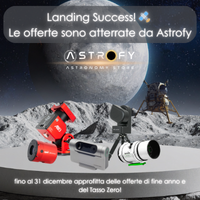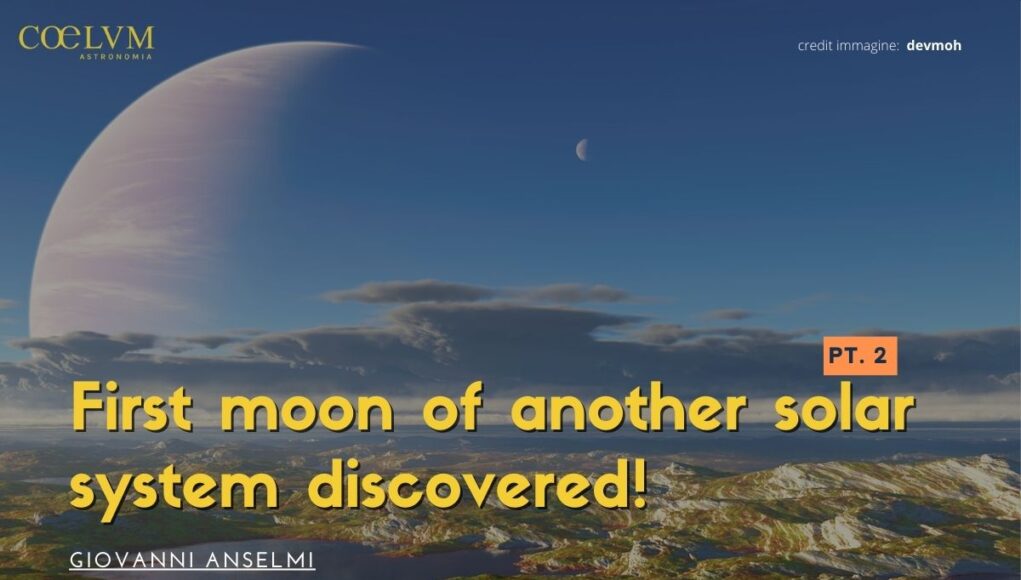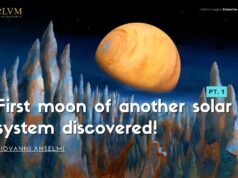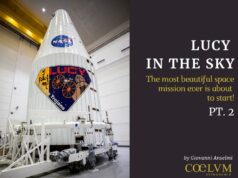Indice dei contenuti
La seconda parte dell’articolo “First moon of another solar system discovered!“
trovi la pt. 1 QUI
If a transiting exoplanet itself has an orbiting companion, it will rotate around the mutual center of mass of the planet-moon system.
In effect, if the invisible moon happens to be ahead of the exoplanet during a transit, its gravitational tug will pull the planet forward slightly, and the transit will begin a little earlier than expected, or conversely hold it back.
So precise measurements of the transit timing variations of an exoplanet can reveal the presence of an unseen exomoon.
The hypothetical moon of Kepler-1625b has not yet been confirmed by independent observations, and it still remains an open case, but Kipping did not give up, and aware that the research would have had more chances of success with very large exomoons, such as those that should orbit around massive gas giants, he selected a sample of 73 large exoplanets that Kepler had seen transit on his star at least twice.
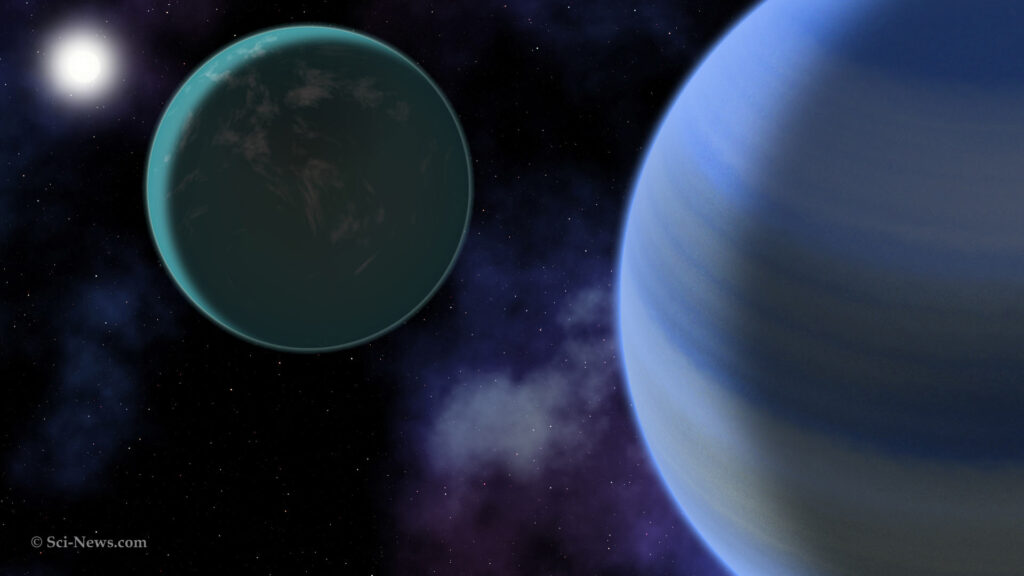
Well … at the end of complex processing of data by mathematical models, only one of the 73 candidates gave birth to the mouse that Kipping was looking for: a probably gaseous object of large diameter 2,6 times the Earth, orbiting a Jovian exoplanet called Kepler-1708b.
The planet orbits the star Kepler-1708, located in the constellation Cygnus at 5700 light years from Earth, at a distance of 1.6 A.U. and with a period of 737 days.
The object, for the moment classified as the exomoon Kepler-1708b-i, completes its orbit around the planet at a distance of 740,000 km (twice the distance Earth-Moon) with a period of 4.6 days.
For now, Kepler-1708b-i will go down in the books as a candidate exomoon. This means that although there are indications that the moon exists, this has not yet been proven.
More observations are needed to confirm the existence of Kepler-1708b-i, Kipping emphasizes. “Kepler is no longer operational, so we can no longer monitor the candidate exomoon using the same telescope. But we can use the Hubble or James Webb space telescope to look at it again.” However, we should not expect a definitive answer in the short term. “We have to wait until March 2023 anyway, when the planet will pass in front of the parent star again.”
On the other hand, if we think only of how difficult it is to identify an exoplanet by measuring nothing but the faint decline in light produced by its transit on the disk of the parent star, it would seem really impossible to see in that decrease the subtle changes introduced by the presence of a moon!
In fact, there is no shortage of skeptics, such as astronomer Eric Agol of the University of Washington. “It could just be a fluctuation in the data, due to the star or instrumental noise,” he says about the signal from the new exomoon.
For his part, Kipping reiterates that the newly discovered exomoon, the only one that has passed all the tests after examining at length the transits of 70 promising planets, “is a stubborn signal: we’ve tried everything, but it won’t go away.
To determine whether the candidate exomoon for the planet Kepler-1708 b is actually a moon, researchers need to observe the system for longer to try to catch the planet passing in front of its star a few more times.
Since following up this specific candidate would be time-consuming – Kepler-1708 b only orbits its star once every two years or so – looking for other exomoon candidates might be more worthwhile, Kipping suggests.
One option is the newly-launched James Webb Space Telescope, which would be able to spot moons as small as Jupiter’s moon Europa, Kipping says. Another exciting prospect for an exomoon-hunting survey is the PLAnetary Transits and Oscillations (PLATO) mission, planned for launch in 2026, which will observe brighter stars than Kepler did, making spotting any exomoons much easier.
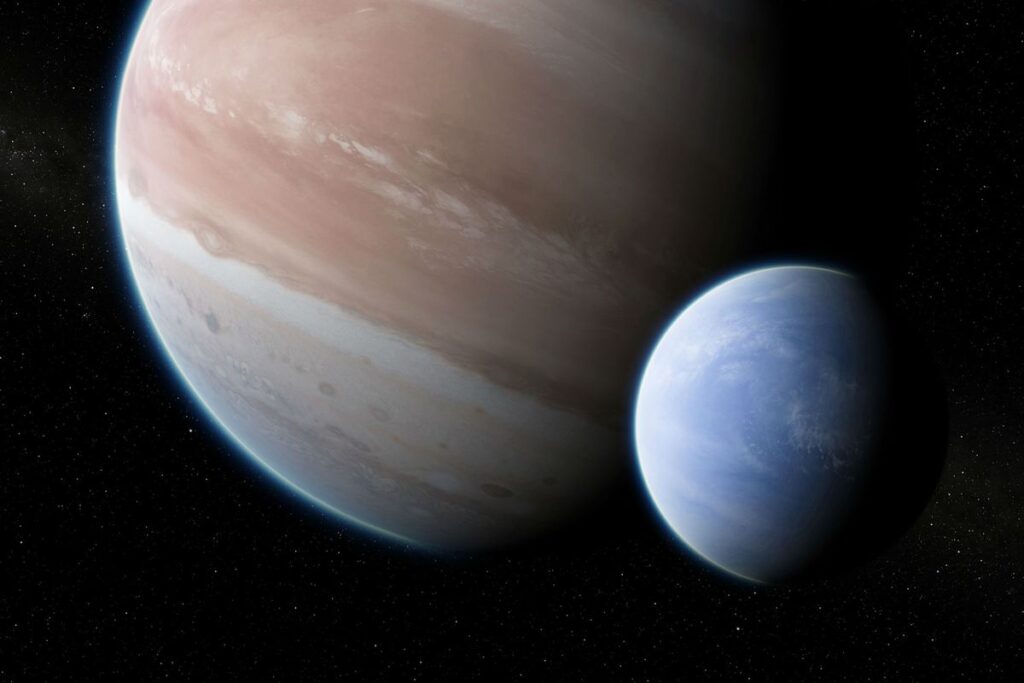
In addition, research into exoplanets and exomoons will benefit greatly in the near future when next-generation observatories such as the James Webb and Nancy Grace Roman space telescopes become available. Now that the James Webb has finally been launched and has deployed its mirrors and heat shield, astronomers expect it to take its first images in just six months. Meanwhile, ground-based telescopes such as the Extremely Large Telescope and Giant Magellan Telescope will also narrow the search for exomoons.
Using their advanced suites of giant primary mirrors, spectrometers, coronagraphs, and adaptive optics, these observatories will perform direct imaging studies of exoplanets. Particularly small rocky planets orbiting closer to their stars where Earth-like planets should be found. These advanced capabilities will also be able to detect faint light signatures left behind by even very small moons.
Either way, it’s worth pursuing, if for no other reason than to have hypotheses to refute. That’s how science works!
